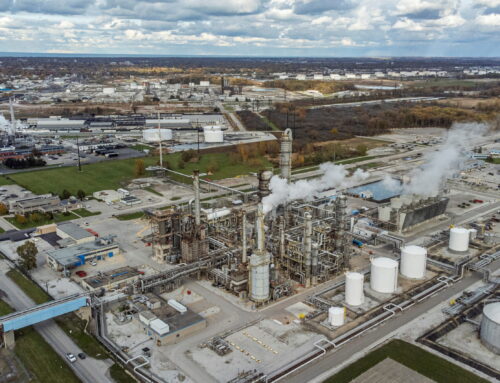April 21, 2022
-National Post
As energy prices skyrocket and Canadians are warned to make better decisions ahead of a looming climate crisis, Prime Minister Justin Trudeau flew 127,147 kilometres aboard government aircraft over the past 10 months.
One year’s worth of publicly available flight data examined by the National Post revealed the prime minister logged the airtime — equivalent to about three trips around the Earth — between his first post-lockdown trip in June 2021 and this Wednesday, when Trudeau touched down in Waterloo, Ont., as part of his cross-country tour hawking his government’s 2022 federal budget.
The prime minister curtailed official travel during much of the pandemic, resuming with a June 8, 2021 flight to London, Ont., to attend memorial services for members of the Afzaal family — killed two days prior in what’s believed to be a hate-motivated attack.
Unlike other members of government and ministers who largely tend to fly commercially, Canada restricts the prime minister to military aircraft.
While aircraft operate under the callsign CANFORCE ONE whenever the prime minister is aboard, executive travel in Canada comes in one of two forms.
For domestic trips, the prime minister normally flies on one of a fleet of Bombardier Challenger 650s operated by 412 Transport Squadron based out of Ottawa airport.
International flights are handled by 437 Transport Squadron, who maintain a fleet of passenger-configured CC-150 Polaris aircraft — military versions of the Airbus A310 airliner — to transport the prime minister, staffers and the press around the world.
(It’s) another one of those Trudeau contradictions
So far, 2022 has been a busy year for Trudeau.
Of the prime minister’s 127,147 kilometres of air travel since last June, 50,680 kilometres — about 40 per cent — took place in just the past seven weeks.
The prime minister’s first travel of 2022 was a nine-hour stopover in Mississauga, Ont., on March 4 to announce a $675 million investment in that city’s transit program.
The PM embarked on the 363 kilometre Ottawa/Toronto flight 11 times over the past 10 months.
Another of the prime minister’s favourite short-haul routes is Ottawa and Montreal, taking the 152 km journey seven times since June 2021.
His shortest flight was 89 km on Nov. 26, 2021 from Abbotsford, B.C., to Victoria, while his longest was the 6,588 km March 11 flight from Warsaw, Poland, to Ottawa.
His longest domestic flight was the first leg of his controversial Sept. 30, 2021 vacation, where he and his family quietly flew 3,889 km. to Tofino, B.C. — despite his official itinerary listing him as attending private meetings in Ottawa, and while Canadians gathered to observe the country’s first Truth and Reconciliation Day.
The PMO has now updated the Prime Minister's itinerary from 'private meetings' in Ottawa to 'private meetings' in Tofino, BC pic.twitter.com/hzIlVuFBoV
— 𝘽𝙧𝙮𝙖𝙣 𝙋𝙖𝙨𝙨𝙞𝙛𝙞𝙪𝙢𝙚 (@BryanPassifiume) September 30, 2021
Notable were the prime minister’s three separate trips to B.C. in two weeks, including his decision to fly west for an Easter holiday trip to Whistler immediately after returning from a western Canada budget tour.
On April 8, the prime minister departed Ottawa on a 415-kilometre flight to Hamilton, Ont., touting his budget’s housing initiatives.
Returning to Ottawa later that afternoon, he departed for Victoria on April 10, flying 3,585 kilometres ahead of a full schedule of announcements the next day, including government investments in electric vehicle infrastructure.
That evening he flew 861 kilometres to Edmonton, where the next morning he promoted his budget’s small business tax cuts, met with members of the Ukrainian and Afghan communities and pitched green technology investments.
Flying 2,989 kilometres from Edmonton to Montreal, the PM hosted an early-morning budget photo op in Laval, Que., on April 13.
As the prime minister completed his final engagement of the day — a noon-hour press conference with Laval Mayor Stéphane Boyer — crews were preparing to depart later that afternoon to transport the prime minister and family to Vancouver for a springtime ski trip at Whistler.
Bruce Campbell, adjunct professor at York University’s Faculty of Environmental Studies, told the National Post this isn’t the first time this government has embarked on confusingly contradictory paths when pitching new environmental policy.
“(It’s) another one of those Trudeau contradictions, like when his government declared a climate emergency and then announced it was buying a pipeline, or more recently put forward its climate plan implemented in Budget 2022 and then approved an offshore oil development project despite the latest warnings from the IPCC (Intergovernmental Panel on Climate Change),” he told the National Post.
Environment groups roundly roasted the Liberals earlier this month over their approval of the controversial $12 billion Bay du Nord offshore drilling project off the Newfoundland coast — seen as a welcomed win by Canada’s energy sector but another frustrating setback for environmentalists.
As the aviation industry continues toward net-zero emissions, Campbell said much government time is spent extolling the virtues of electric vehicles while ignoring significant developments in the field of electric aviation.
Two years ago, a B.C. airline made history after test flying the world’s first all-electric commercial aircraft, an electrically powered de Havilland Beaver floatplane that took off from the Fraser River for a brief, five-minute flight.
While a full charge will keep that aircraft aloft for about an hour, recent advances suggest that electrifying aviation isn’t far off.
“Nor have I heard that Trudeau is at least engaging in carbon offsetting of his voluminous flight record, or whether on the short flights he could be using lower carbon-emitting alternative transportation,” Campbell said.
“I have not heard any environmentalists’ critique of his air travel record.”
The prime minister’s aircraft use has come under scrutiny before.
Less than two days into a 2019 Florida vacation, Trudeau quietly returned to Ottawa for meetings before flying back south.




